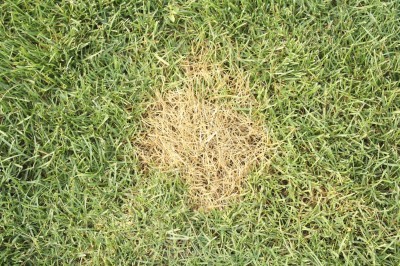
Brown lawn patches are probably the most frustrating problems that homeowners have with their lawns. Because there are so many different kinds of problems that can cause brown spots on grass, home diagnostics can be tricky, but there are a number of care items that help with brown lawn repair, even if you don’t know what’s really wrong with your lawn.
Brown Lawn Fixes
No matter what’s wrong with your grass, when your lawn has brown spots, your turf care hasn’t been ideal. Before you do anything drastic, try these simple fixes for your lawn woes:
- Dethatch. A thatch layer of more than a half inch is trouble brewing. This much thatch acts like a sponge, soaking up any water that would normally go to roots and holding onto it tightly. When the thatch is always wet, you prevent the grass from getting the water it needs and encourage the growth of several different lawn fungi that can cause brown spots. Dethatching the lawn helps prevent this.
- Watch your irrigation. Many turf grasses are extremely touchy about watering, insisting they neither have too much, nor too little water. In most areas, about one inch of water each week is plenty, but if your lawn starts to dry out as temperatures climb, increase your watering efforts temporarily. Sometimes, too much water is the problem, so make sure that your lawn drains well and grasses aren’t standing in water for long.
- Check your mower blade. Incorrect mowing causes a lot of problems with lawns across America. A dull mower blade tends to shred grass blades instead of cutting them, allowing the tips to dry out completely. Cutting the grass too low, or scalping it entirely, allows the grass crown and soil below to dry quickly. If your grass is suffering from a disease rather than a care issue, cutting it too short will make things significantly worse.
- Test the soil. Fertilizing your lawn is a good thing, but not until you’ve done a proper soil test. Ensure the pH is above 6.0 and that there’s ample nitrogen in the soil below your grass in the early spring, before the grass starts to grow, and any time your lawn looks sickly. If you find that your lawn does need some fertilizer, be careful to only apply the amount indicated by your test.
Although brown spots in the lawn can be caused by many different problems, most will resolve themselves once you’re properly caring for your lawn. Grass is surprisingly resilient and quickly recovers when it’s treated well.






